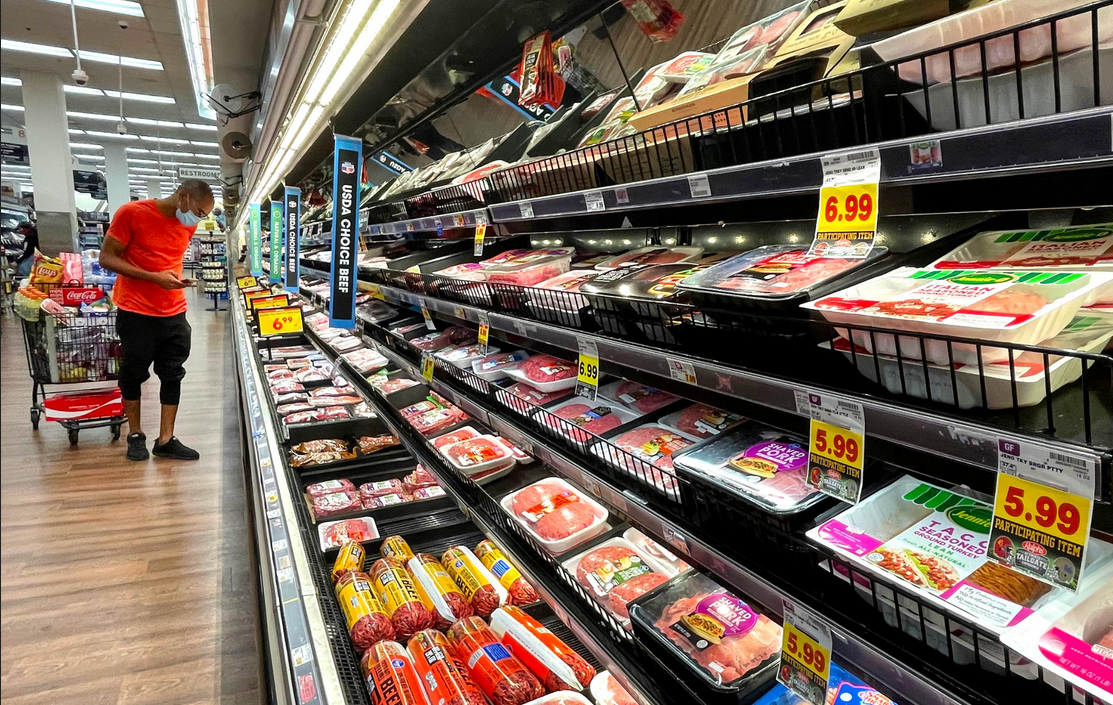Inflation is the term economists use to describe a rise in prices over time. Price increases are usually caused by a combination of factors, including greater demand for goods and shortages of raw materials.
Expansion, be that as it may, happens when the typical cost of for all intents and purposes all that customers purchase goes up. Food, houses, vehicles, garments, toys, and so on. To manage the cost of those necessities, compensation need to rise, as well.
It’s not generally something terrible. In the United States, for the beyond 40 years or somewhere in the vicinity (and especially this really long period), we’ve been living in an ideal low-and-slow degree of expansion that accompanies a very much oiled purchaser driven economy, with costs increasing by around 2% per year, if that. Without a doubt, costs on certain things, such as lodging and medical services, are a lot higher than they used to be, yet different things, similar to PCs and TVs, have become a lot less expensive — so the normal of the multitude of things consolidated has been generally steady.
Still with me?
Good, we should slice to now, and why expansion is all around the information.
At the point when ‘expansion’ is a terrible word
Expansion becomes tricky when that low-and-slow stew gets started up to a bubble. That is the point at which you hear financial specialists discuss the economy “overheating.” For various reasons, generally coming from the pandemic, the worldwide economy winds up at a thorough bubble at the present time.
Business analysts utilize two primary checks to follow expansion in the United States, and keeping in mind that both facilitated among June and July, they’re actually close to their most elevated level in forty years.
The Consumer Price Index for July rose 8.5%. The Personal Consumption Expenditures cost file, which the Federal Reserve likes, rose 9.8% in July from a similar period a year sooner.
What’s more, here’s where Econ 101 consolidations a piece with Psych 101. There’s a social financial matters perspective to expansion, where it can turn into an inevitable outcome. At the point when costs go up for a sufficiently long timeframe, customers begin to expect the cost increments. You’ll purchase more merchandise today assuming you think they’ll cost obviously more tomorrow. That increments request, which makes costs rise significantly more. Etc. Etc.
That is where it can get particularly precarious for the Fed, whose primary occupation is to control cash supply and hold expansion within proper limits.
How’d we arrive?
Fault the pandemic. Furthermore, Russia’s conflict on Ukraine.
In the spring of 2020, as Covid-19 spread, it resembled yanking the attachment on the worldwide economy. Plants all over the planet shut down; individuals quit eating at eateries; carriers grounded flights. A large number of individuals were laid off as business vanished for all intents and purposes for the time being. The joblessness rate in America shot up to almost 15% from around 3.5% in February 2020.
It was the most honed monetary withdrawal on record.
Simultaneously, the Fed executed crisis upgrade measures to hold monetary business sectors back from failing. The national bank sliced financing costs to approach zero and started siphoning a huge number of dollars consistently into the business sectors by purchasing up corporate obligation. In doing as such, the bank probably forestalled an all out monetary implosion. In any case, keeping those income sans work approaches set up throughout recent months has likewise energized — you gotten it — expansion.
By late-spring 2020, interest for buyer products began to get back. Quickly. Congress and President Joe Biden passed a memorable $1.9 trillion improvement bill in March that made Americans out of nowhere loaded and joblessness help. Individuals began shopping once more. Request went from zero to 100, yet supply couldn’t return with such ease.
Turns out that when you take out the fitting on the worldwide economy, you can’t simply plug it back in and anticipate that it should begin murmuring at a similar speed as in the past.
Take vehicles, for instance. Automakers saw the Covid emergency starting and did what any savvy business would do — shut down briefly to moderate misfortunes. Be that as it may, not long after the pandemic shut manufacturing plants down, it likewise drove up interest for vehicles as individuals stressed over openness on open travel and abstained from flying. Automakers (and vehicle purchasers) had whiplash.
Vehicles require a colossal number of parts, from a massive number of various processing plants from one side of the planet to the other, to be worked by exceptionally talented workers in different regions of the planet. Getting those prudent activities back internet based takes time, and doing as such while holding laborers back from becoming ill takes considerably additional time.
Market analysts frequently depict expansion as an excessive amount of cash pursuing too couple of products. That is precisely exact thing occurred with vehicles. Furthermore, houses. Furthermore, Peloton bicycles. Furthermore, quite a few different merchandise that became hot ticket things.
How’s the store network engaged with this?
“Store network bottlenecks” — that is another you see everywhere, correct?
We should return to the vehicle model.
We know that popularity + restricted supply = costs go up.
However, popularity + restricted supply + creation delays = costs go up considerably more.
All cutting edge vehicles depend on an assortment of CPUs to work. However, those chips are likewise utilized in cellphones, machines, TVs, PCs and many different things that, as misfortune would have it, were all popular simultaneously.
That is only one illustration of the distinction in the worldwide production network. Since new vehicles have been delayed to come in, utilized vehicle request shot through the rooftop, which drove generally speaking expansion higher. At times, vehicle proprietors had the option to sell their pre-owned vehicles for more than whatever they paid for them a little while earlier.
What occurs straightaway?
Costs and wages could be beginning to ease, however will probably stay raised for quite a while. For how long, and by how much, relies upon innumerable factors across the globe.
Russia’s attack of Ukraine ran trusts that costs would descend fundamentally in 2022.
The contention has overturned product and oil markets, driving up costs of food and gas all over the planet. That is intensifying inventory network cerebral pains, prompting further deficiencies of basic food things and oil.
Lockdowns in China recently, in the mean time, left the world’s biggest seaport basically at a halt. Organizations bear some fault too, as many large organizations have been raising costs to safeguard their net revenues.
Furthermore, it’s impossible to tell what sort of new shocks — a resurgent Covid variation, a huge steel trailer stalling out in a stream, a catastrophic event — could slow down progress.
There’s no single government or national bank that can fix the expansion coming about because of those worldwide interruptions.
Be that as it may, national banks are giving their very best. In the United States, the Fed started bringing rates up in March by a fourth of a rate point — its most memorable increment starting around 2018 — and have since raised rates multiple times this year. The fact that they’ll stop at any point in the near future makes there no sign.
At the point when cash turns out to be more costly to get, that can ease the pressure off cost increments and carry the economy back down to that decent, delicate stew. Or on the other hand so the Fed trusts. Its greatest test is to convey loan fee climbs at a speed the economy can endure — raising them to an extreme, or excessively fast, would risk imploding request, which could crash monetary development or even reason a downturn.



